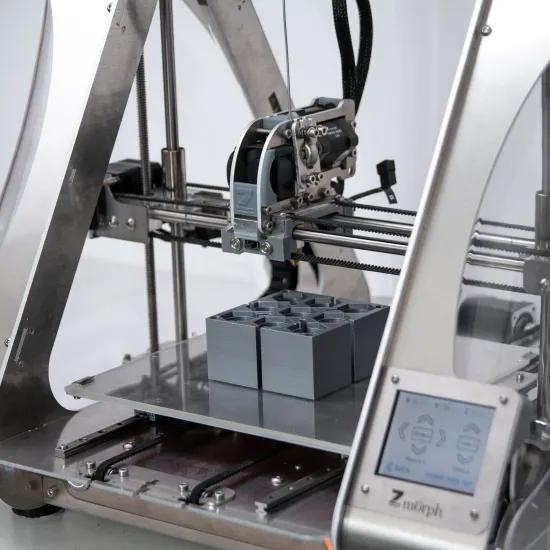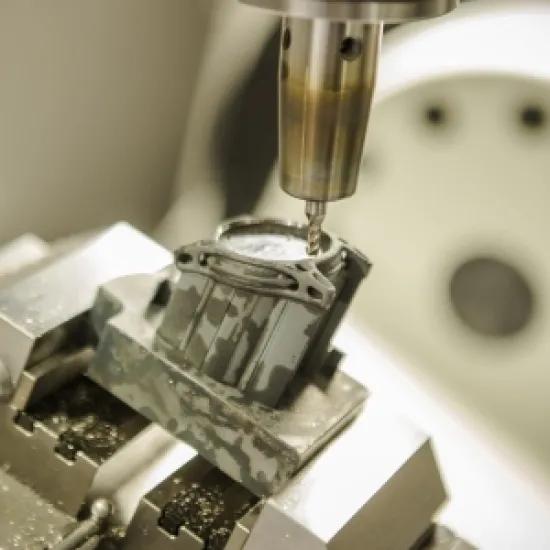In these times of Industry 4.0 and Industrial Internet of Things (IIoT) we may think that a Manufacturing Execution System (MES) or an IIoT backbone has become an absolute requirement to digitally connect the office (the ERP) with the shop floor. In this first of two articles we look at whether this is always the case.
Let’s cut to the chase: not every SME needs extra MES functionality to link the office and the shop floor, provided that the available ERP modules and possibilities are fully utilised. Because ERP makers also want to claim a part of the MES market, many traditionally have a shop floor module at their disposal. Its typical functions form the basis for a digital vertical integration of office and shop floor: through this ‘paperless’ and more real-time connection, we provide a transparent shop floor and shorter lead times.
Functions of shop floor module
The most important functions are:
Operator receives digital work orders
The work orders can be displayed at the workstations via a screen, ideally a touch screen. Not only is this time saving, but it allows us to visualise only those orders that can effectively be worked on. Operators will not start jobs up much too early, or jobs which cannot immediately be completed downstream. Often there is also a work order management system that allows for more manipulation than just the transmission of MRP orders.
Job registration
Start and stop times can be entered via the screens. In principle, this does not require extra work: selecting a particular order can be the timestamp for starting (and ending) a previous order. Other feedback, such as actual consumption, number of pieces and quality related info, can also be passed on. In order to respond quickly to any variability in production and to inform the customer when he requests it, it is very important that MRP and planning are immediately aware of a change in order status. Companies which are still registering jobs on paper, which are usually not entered into the system until the next day, are therefore always lagging behind. If the production info on paper is only converted into digital production notes, which are difficult to search and not available for MRP, we are doing things completely wrong.
Advanced planning and scheduling
These functionalities can control work orders more efficiently than just an MRP. Response times can be reduced in terms of the availability of components (deliveries) and it is possible to react more quickly to unexpected events. Such a planning system can work with finite (self-levelling) or infinite capacity and offers more graphical capabilities (Gantt chart) than a standard ERP. When present, this advanced planning system provides the input for offering the work orders at the workstations. In the other case, a third-party production scheduling system can also be linked, or even better, a pull-based control (as is the case with quick response manufacturing - QRM).
Machine connection
Via an API (Application Programming Interface) of the ERP suite, third parties can also make connections to machines, allowing simple signals such as start/stop times, RFID order data and the like to be transmitted. Again, it’s not necessary to involve an MES, although an IIoT expert might often be helpful.
Issues of concern
Please pay attention to the following points when considering using the shop floor module of your ERP or rather opting for an MES:
- In some ERPs, the shop floor module is only able to deliver a digital work order.
- The advanced planning system of an ERP shop floor module cannot be compared to so-called finite scheduling systems in terms of the underlying algorithms. Usually it is only about (graphically) planning work orders one after the other, within the available capacity and with interdependency of the operations (i.e. shifting all operations if you move one). When scheduling with finite capacity, this is mainly for the bottlenecks. For most SMEs, this is quite sufficient. Do check the planning resolution (the smallest time step). In some cases this is only a day; you can hardly speak of planning, unless your company has very long lead times. A typical resolution is minutes or hours.
- We can say that a shop floor control module is a simplified form of an MES. It is connected to a certain ERP and you can therefore usually not install a shop floor module from another provider next to your ERP. So if you are about to choose a new ERP, it is best to check whether you need an MES, or whether your own shop floor module is sufficient.
- If the needs are more extensive, it is better to opt for an MES or for custom developed functionality. In the latter case, development via a 'low code' software platform is preferred. There is no need to program from scratch, you can start from an existing functional module. Some examples of when it is best to opt for more far-reaching MES functionality::
- Your own ERP does not have a shop floor module.
- You have high requirements in terms of: quality management (waste flows, processing by-products, real-time monitoring,...), tracking & tracing, production line efficiency and downtime, OEE, drill-down in the event of efficiency losses, stock and WIP management, and machine connections.
These requirements are more in demand in some sectors than others, e.g. food, electronics, semi-process industry, .. - You want to control AGVs on the shop floor.
Conclusion
In many cases, an ERP shop floor module will suffice for most SMEs. Whether or not you should look for an MES (standard or tailor-made) is best determined through an in-depth selection procedure, in which you are assisted by external expertise.
In a subsequent article on this topic, we describe a possible path for digitisation of the shop floor using the demonstrator that Sirris built, with the aim of connecting an ERP environment (in this case Priority Software ERP) to the shop floor. This includes connecting machines as well as taking care of the internal logistics and managing AGVs. This connection was carried out by the company Scalefactory, using Salesforce as a low code platform.
Sirris will also organise a masterclass at the end of this year as well as coaching sessions on the digitisation of the shop floor in 2021. Make sure to keep an eye on our Sirris agenda !
(Source picture: INFORM Software and PROPOS Software)




